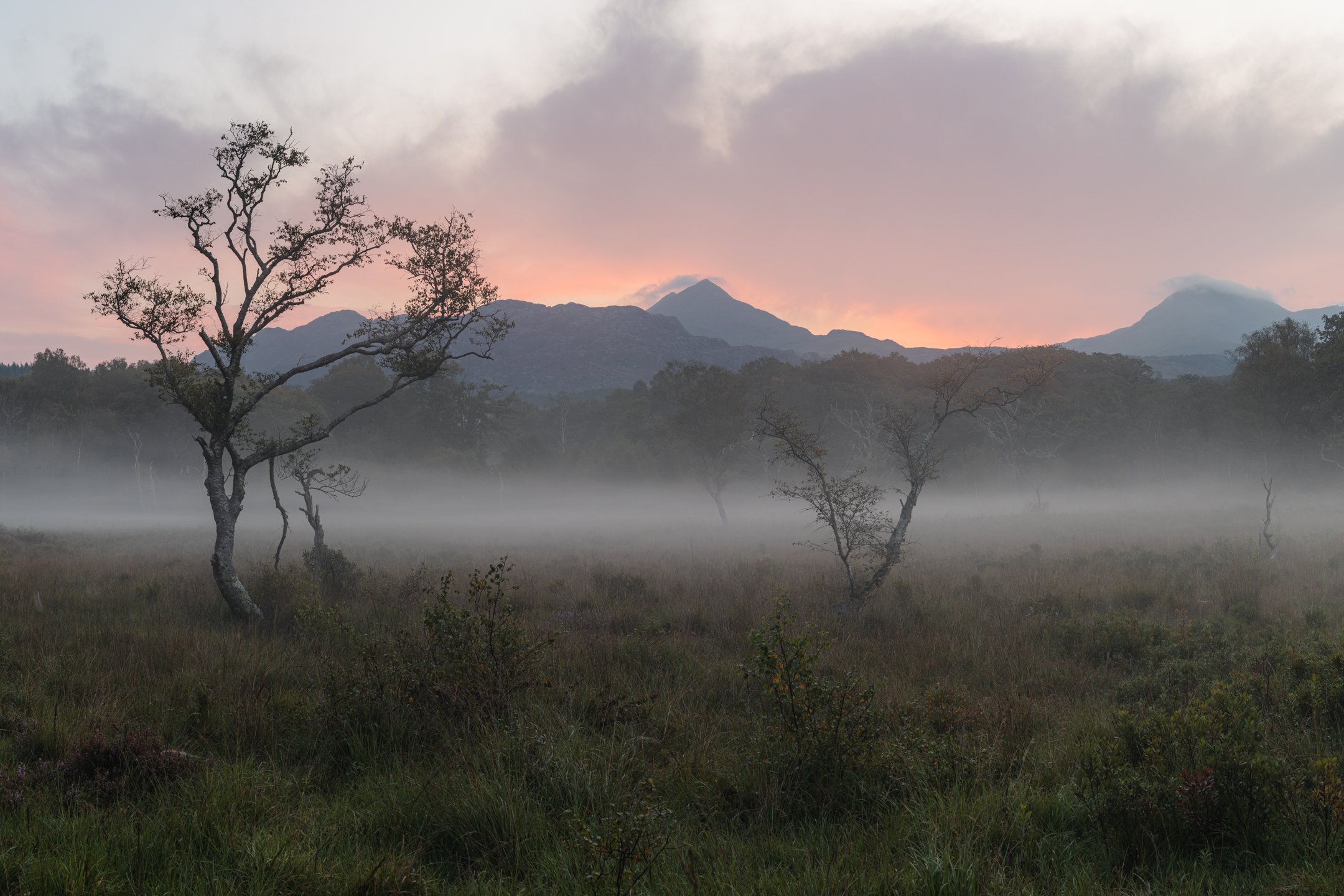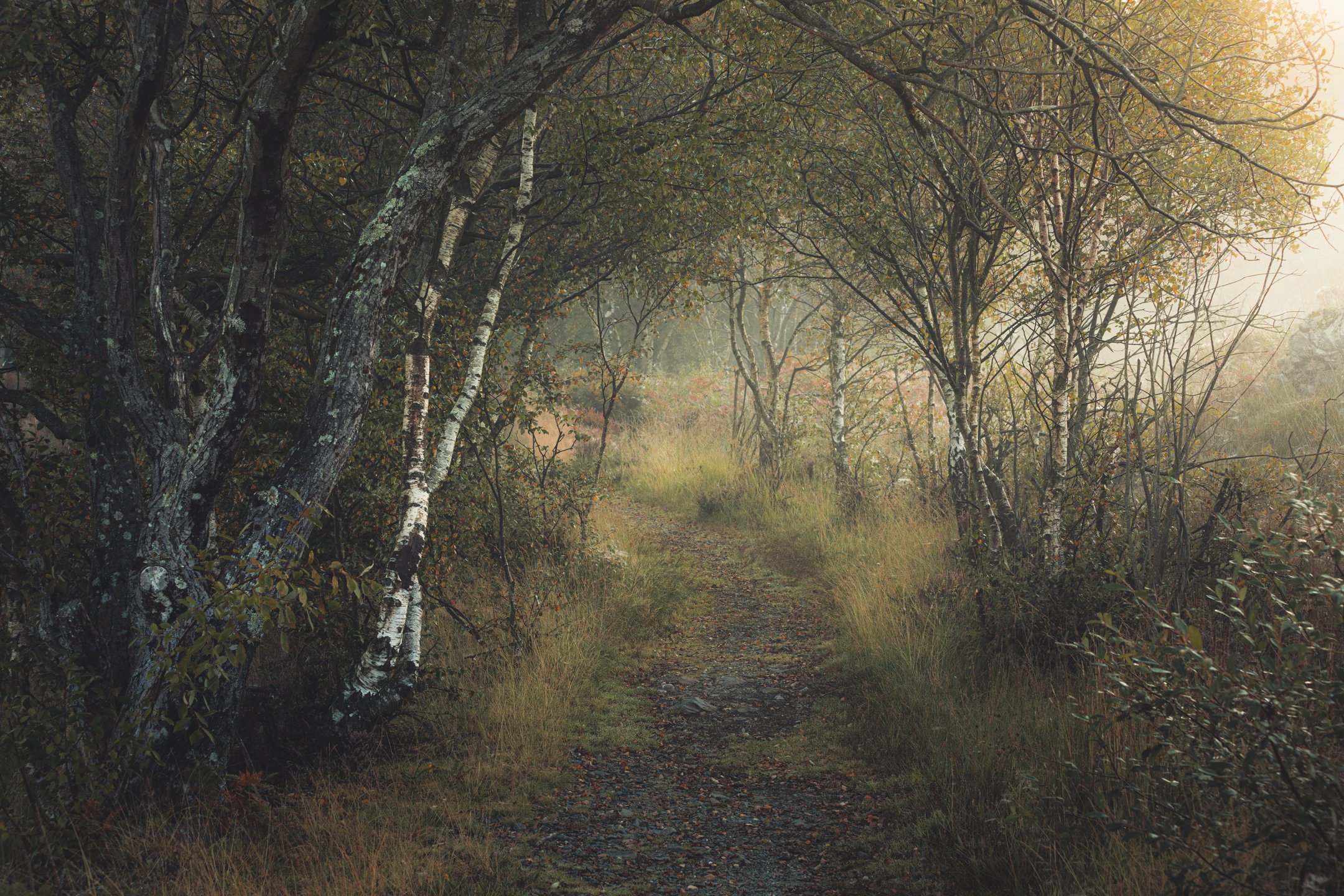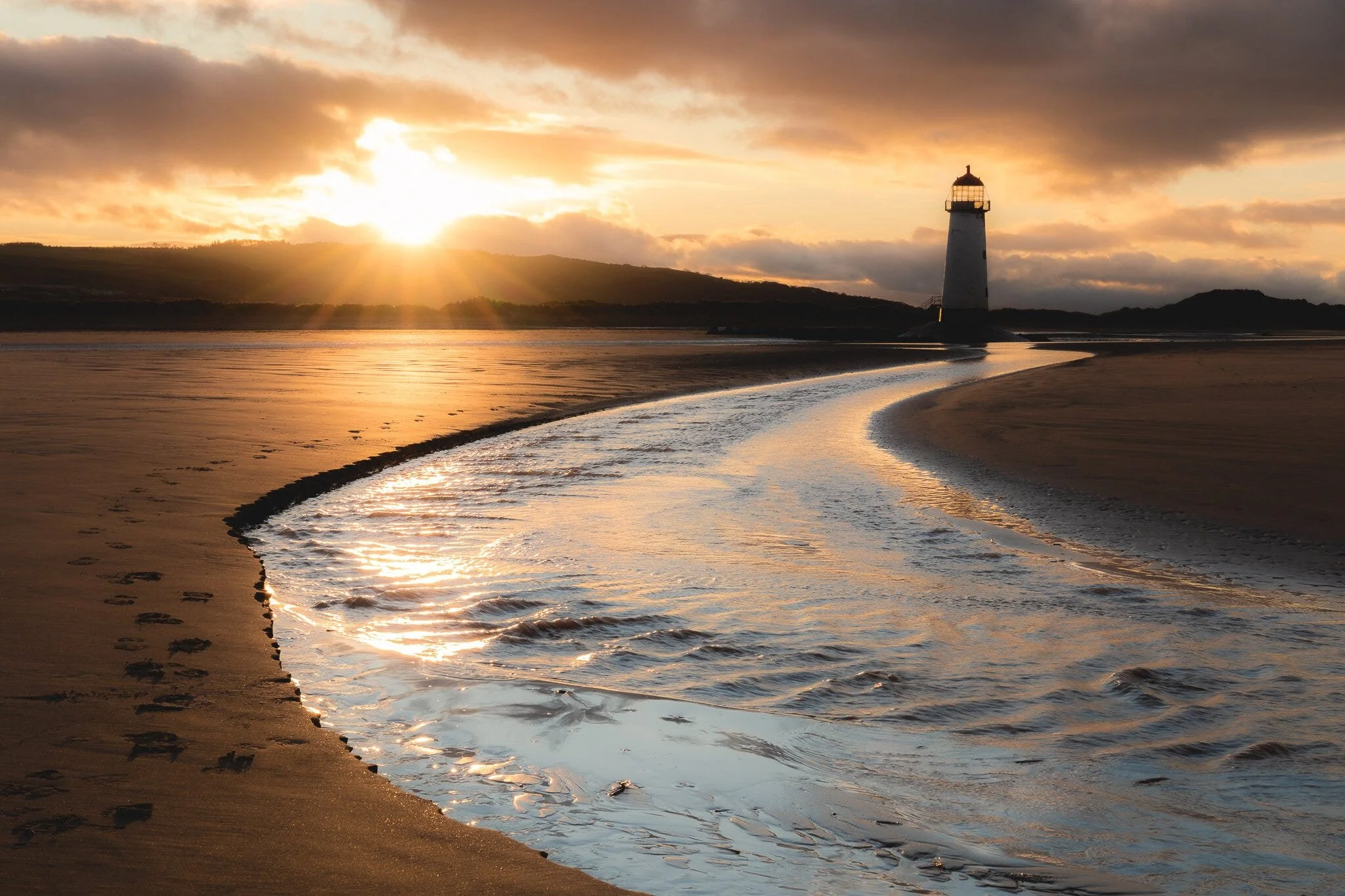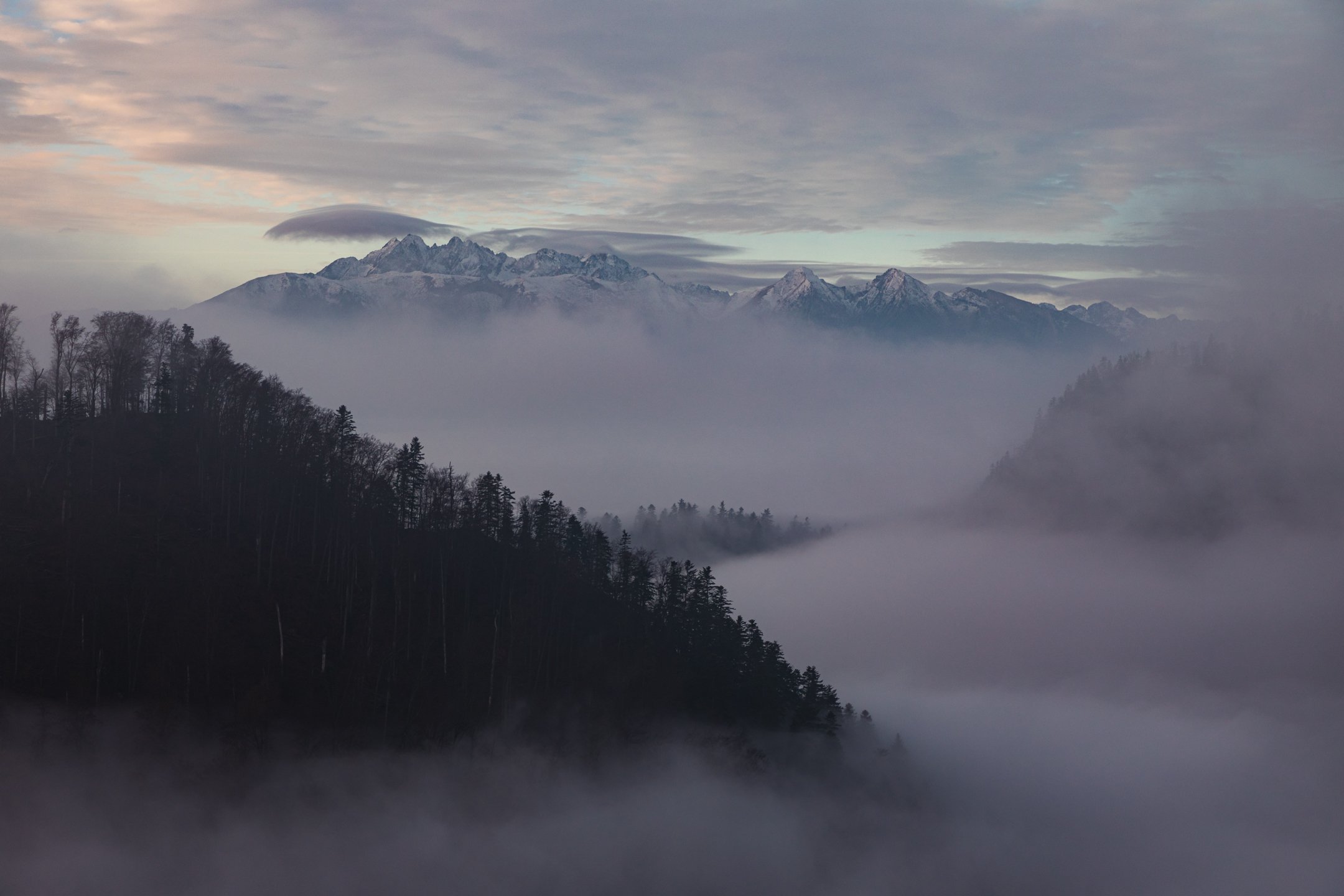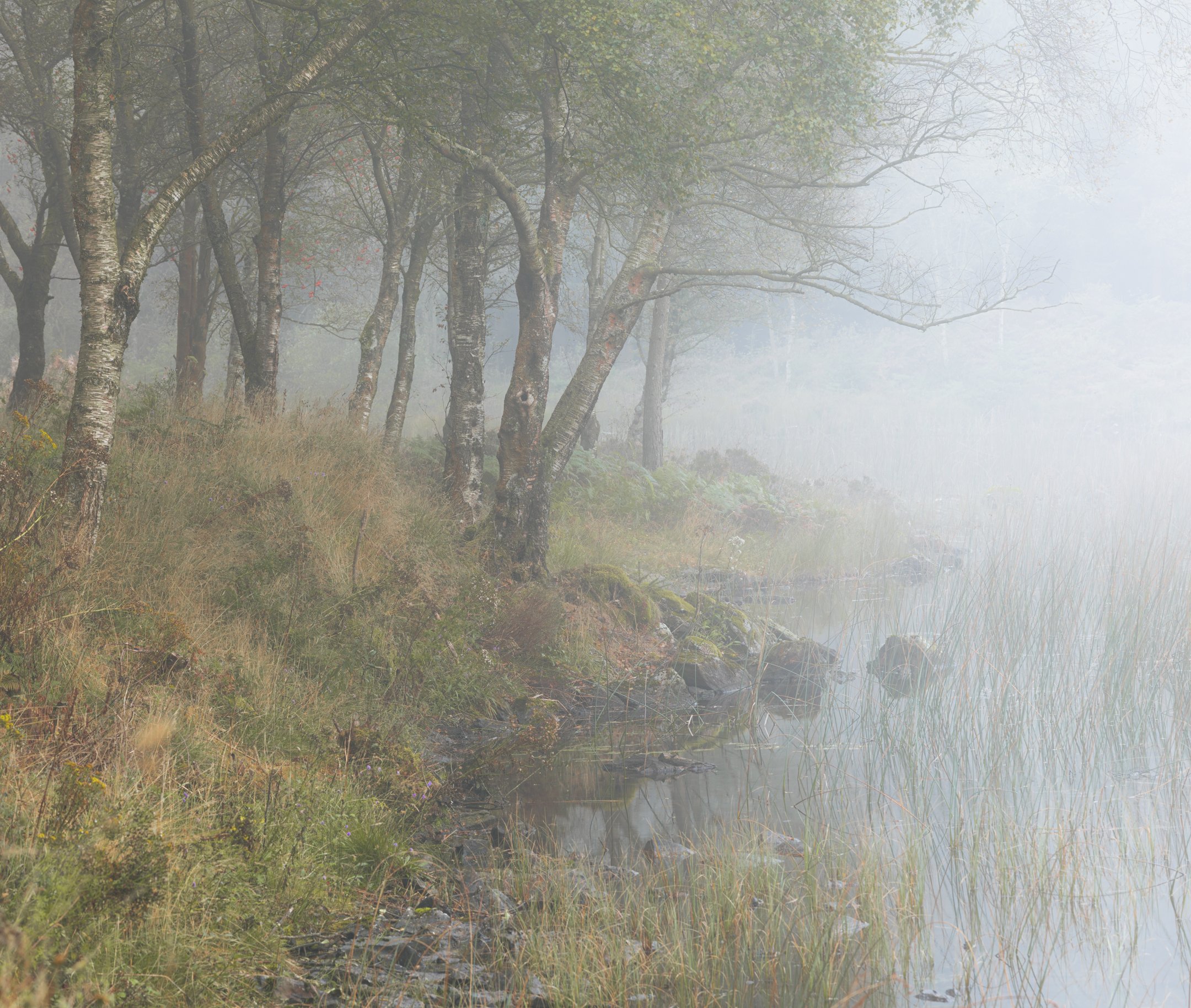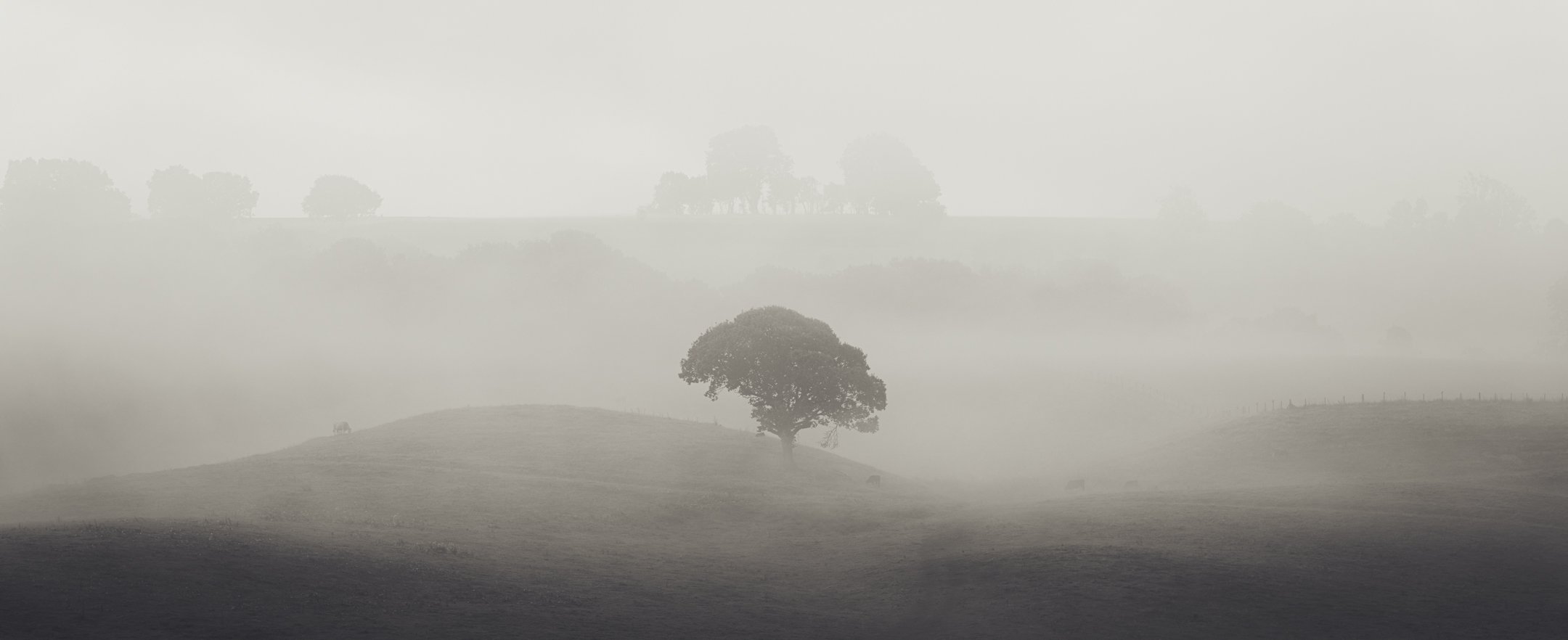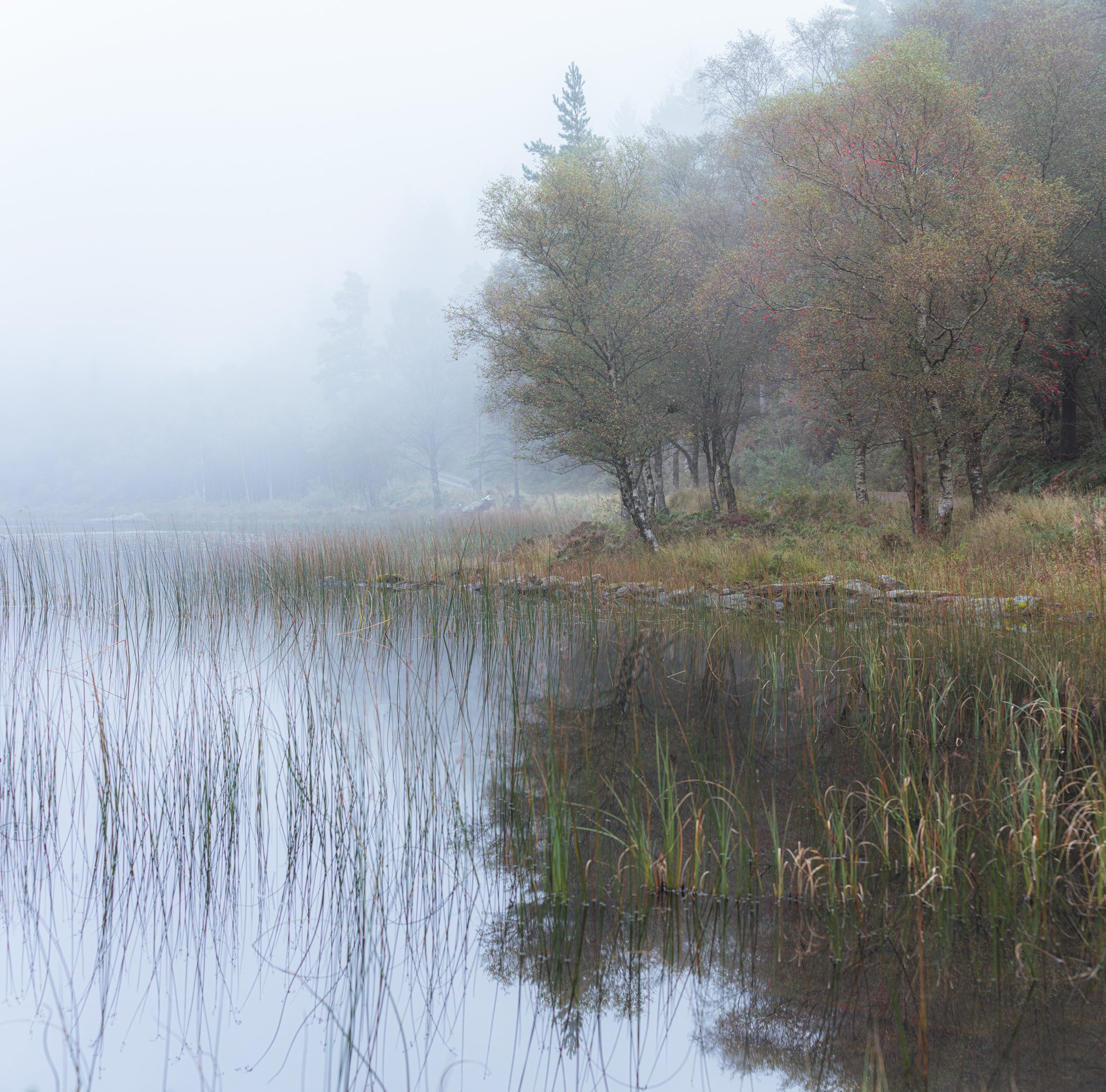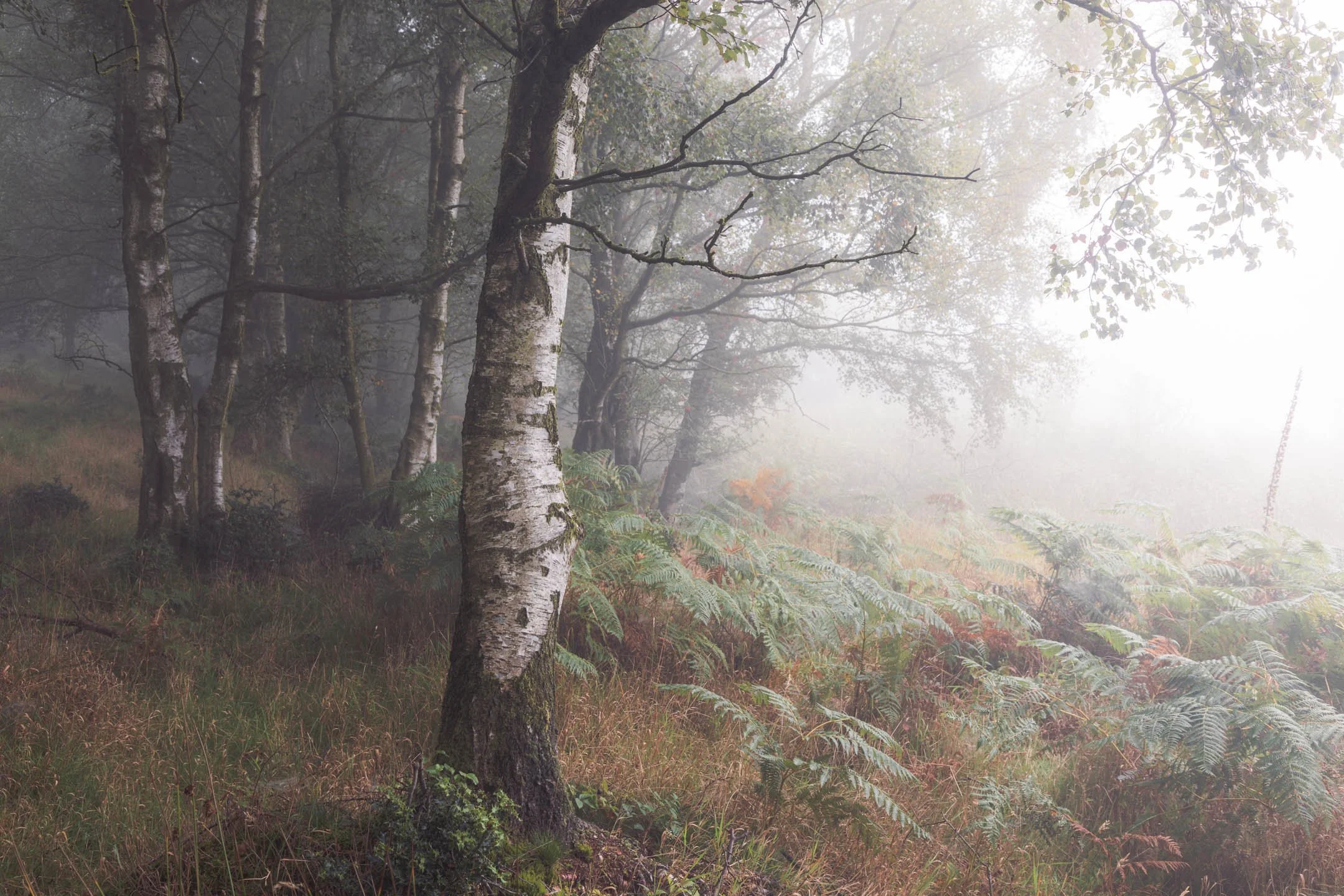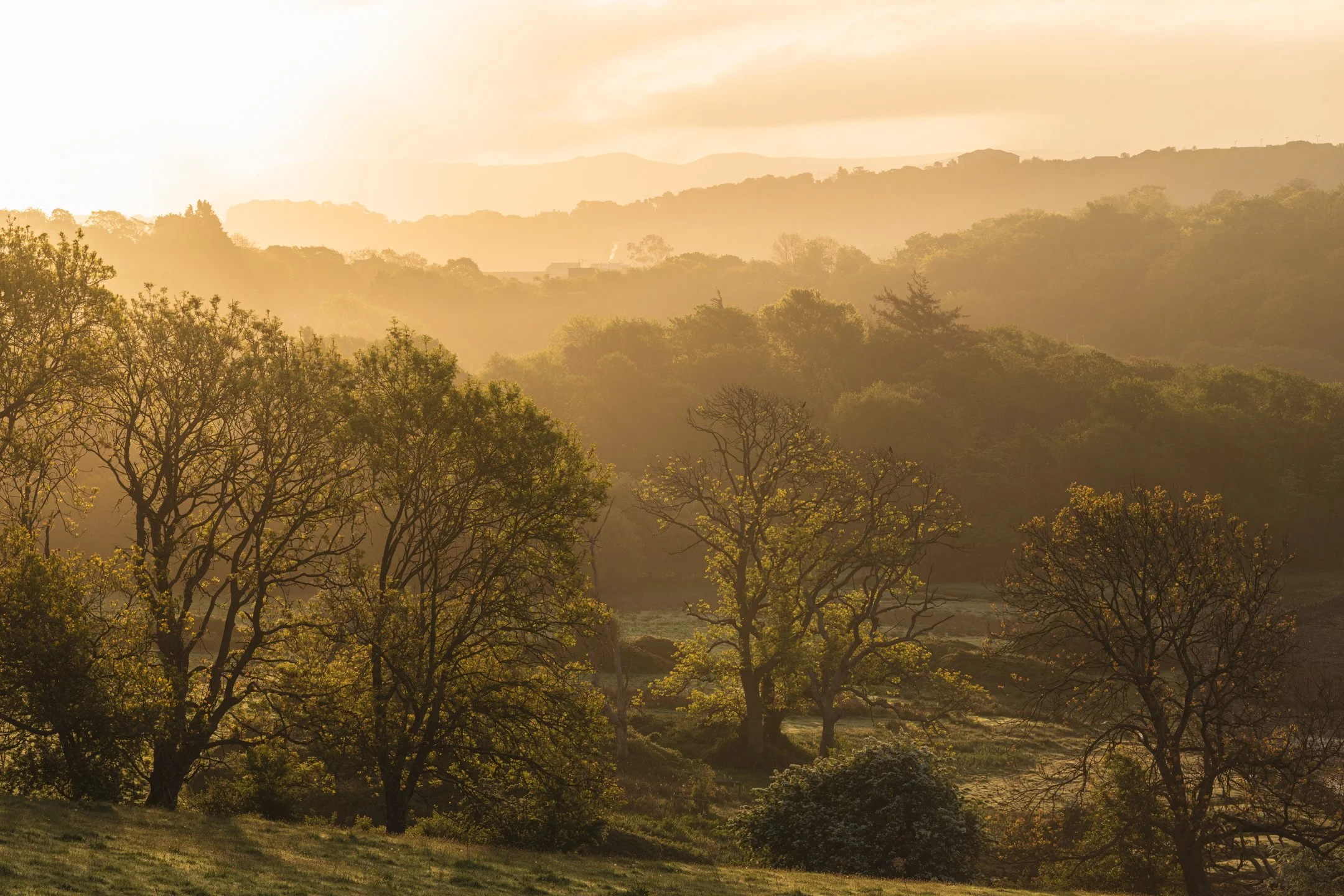Understanding Light in Landscape Photography Part One: Different Types of Light
I’m Brad Carr, and in Ten Thousand Hours, I share practical and technical articles to help you improve your landscape and nature photography. I also organise group workshops, creative retreats, and am available for private one-to-one photography tuition as well as online and in-person creative mentoring.
Introduction
Light. Where would we be without it? I wouldn’t be here to write this article, that’s for sure. Light, quite literally, gives us all life here on earth, and that is one of the reasons why I enjoy creating photographs of the landscape. It is my way of declaring my undying love for this wonderful human existence and showing my respect for the great spirit of Nature. But how exactly, you might be asking, do you use light to create a compelling photograph and convey a meaningful and emotive story?
There are so many different ways to use light in landscape and Nature photography, so many different types and even different colours of light; think about the colour of ‘golden hour’ light at sunrise compared to the harsh, white light on a summer’s day or the soft, pastel colours during ‘blue hour’. All of these varying colours of light interact in different ways with the colours of the landscape, completely transforming its appearance.
One of the most important jobs we have as photographers is to understand how to use light to create various effects in our photography. Shooting into the light, shooting with the light, shooting across the light, reflected light, front light, backlight, soft light, harsh light, diffused light, dappled light, even light. These phrases might well be familiar to you, but do you understand the differences that each lighting technique can make to your photographs?
Take a look at both examples below, taken just one day apart. Notice how different light can completely transform a woodland scene.
Example 1: created at 10am on an overcast morning. ‘Even light’ means that there is minimal contrast between the highlights and shadows in the scene (more on this later).
Example 2: created at around 8.15am, just a day later, when the sun was still close to the horizon. Low light creates strong shadows and, therefore, depth, and the softness of the early morning light interacts with the scene to create a beautiful palette of colours throughout.
Can you tell from the areas of shadow which direction the light was entering the woodland during that morning? How might this scene, therefore, look later on in the day? Visualisation is key to creating portfolio-worthy photographs.
It’s not that one form of light is necessarily better than another; it’s for you to decide which kind of lighting suits a particular scene, depending on your artistic vision and the story that you’re trying to tell. If you’re someone who prefers a particular colour scheme or style to your photography, then it might be more important for you to stick to rigid rules when it comes to the times and conditions that you shoot in. For me, I like to make the most of a variety of conditions as I believe that there are always images to be created. I am based in Wales in the UK, after all, so I have had to learn to embrace whatever weather Mother Nature provides. Let’s continue this article with an overview of the different types of light that you will likely encounter in the landscape.
Different Types of Light & Light Quality
Golden Hour
This is the most common light in most genres of photography. Portrait photographers particularly love this soft, rich, delicate golden light for how it interacts with their subject. In landscape photography, this is no different. Golden hour photographs can be seen everywhere, and it is particularly common to see this style of light used by photographers who are just starting and learning the fundamentals of the craft. This photograph of mine from North Wales was created two years into my photographic journey, when I would regularly chase this kind of glorious, golden light.
When shooting with golden hour light, we often find that the landscape has a ‘softness’ to it. The shadows are gentler, and the transition between areas of light and shadow is much smoother, as you can see in the photograph below. In contrast to the above photograph, in which I pointed my camera directly into the light, this was photographed with the low sun to the side of the frame. You will read more about the direction of light and how this impacts a photograph a little later on in the article.
Twilight
One of the best—and often overlooked—times of day to photograph is during the twilight hours before the sun has crossed the horizon in the morning, and after it has set in the evening. During these precious moments, the world is often silent, and it is easier to find that place of inner stillness that makes the soul sing. It is during these sacred hours that I am often compelled to create photographs because I like my photographs to reflect my feelings of inner peace and stillness.
During the twilight hours, the landscape is cast with beautiful blue, violet, and mauve colour tones, which are often associated with being calming and soothing. That suits my work perfectly for the messages of peace and stillness that I am trying to convey through my photographs.
One thing worth noting, if you wish to try and create photographs like these, is that the absence of sunlight will mean that you need a longer shutter speed to allow sufficient light into the camera. A tripod will, therefore, be necessary during twilight hour photoshoots. It is also worth bearing in mind that the camera can absorb more light than our eyes can. A scene that might appear to be dark to our eyes could be well-lit with a longer exposure time on the camera. This opens up new possibilities during low-light hours.
Reflected Light
Another often overlooked style of light in landscape photography is reflected light. Light reflected onto clouds after the sun has gone down, or reflected off the clouds onto our subject, can be particularly striking, and learning how to ‘see’ this kind of light can be transformational along our creative paths. It is always worth trying to get out before the sun has risen and sticking around after sunset for the ‘afterglow’ as seen in the photograph below.
The first photograph above shows how the woodland looked under normal light on that overcast autumn morning. It looks rather dull when compared with the second image, with its rich, vibrant colours and soft pink, orange light that was cast for a few short moments on the ferns and trunk of the large, ancient silver birch tree. This light was cast from the sunrise as it reflected off the low clouds after a brief clearing on the horizon. It serves as another reminder to me to always be attentive to what is happening around me as I am outdoors searching for photographs. We often only have a brief moment in time to capture the best light, and quite often, once this light is gone, it is very difficult to find any like it again.
GET YOUR FREE eBOOK!!
Receive your link to a FREE eBook Covering the Principles of Composition in Landscape Photography.
Dappled Light
This is the kind of light that kisses the landscape as it filters through small breaks in the clouds. It is commonly used when the light is more overhead, so in the hours preceding sunset, golden hour, or following the morning golden hour. You can make use of dappled light throughout the entire day; you just have to utilise the clouds to subdue the harshness of colour that afternoon sunlight usually creates. Using this dappled light effect can be particularly useful to draw attention to certain subjects and, as in the case below, to add further depth and atmosphere to a photograph.
Even Light
You will often find evenly lit scenes on foggy mornings and overcast days. This kind of light, or rather, the absence of direct light, can lead to some of the most compelling photographs for their melancholic mood, which leaves plenty to the imagination. I much prefer it when there is some fog in the air when photographing with this kind of light because it can help to add a depth that is usually missing on grey, overcast days.
The example below is where I think the even light helps to tell a compelling story and overall feel and mood to a photograph that I created in Snowdonia National Park. Without the fog in the air, there would be no separation between the foreground and background, so this was a critical component in making this photograph work.
Here are some further examples of where even light has made photographs work:
Diffused Light
Diffused light is often a woodland photographer’s favourite kind of light. Early morning fog acts as the perfect diffuser, softening it as it enters a woodland to cast a lovely glow onto the trunks of trees. This kind of light makes for some of the most delicate and atmospheric scenes. It adds mystery and helps to create a lovely transition from light to dark across the image.
The real magic in landscape photography happens when these lighting styles are combined, for example, when fog meets low, golden-hour light, as shown in the photograph below. In this example, diffused light meets backlight, and this is, without doubt, one of my favourite styles of light to use.
This kind of light adds depth, mood, drama, and emotion to a photograph, making these kinds of photographs, in my opinion, some of the more complete, soul-awakening landscape photographs.
Hard Light
This is usually a landscape photographer’s least favourite type of light to use because of its harsh, piercing and unflattering appearance. Hard light, the kind that you often see in the middle of the afternoon when the sun is high in the sky, can make the colours of the landscape appear too bright and vibrant. There is also a hardness to the shadow areas of a photograph, like those in the one that I have shared below. I rarely photograph during the peak afternoon hours, so I had to work very hard to find this photograph from Snowdonia in my archives.
Creative challenge: Can you go outdoors and create some of your own photographs that replicate those that you have seen here with these different lighting styles?
So, there we have it. This was part one of my comprehensive guide to using light in landscape photography. I hope that you learnt something useful and that you now feel inspired to go out and create your own photographs using the different types of light described here in this practical article. If you want to stay up to date with all of my writings here at Ten Thousand Hours, consider signing up for my monthly newsletter. I send out monthly emails with links to new writings, events, workshops, and things I have found inspiring that month.
If you enjoyed this article, perhaps you might like to read part two, where I share more about light, and more specifically, different directions of light that we can use in landscape photography.
If you’re looking for somewhere to share the results of your future photographic creations, you might like to join the Finding Light Photography Community on Facebook. It is a closed, intimate group for like-minded photographers to share, learn and grow. Occasionally, I share exclusive updates and links to articles and events which you might also find useful.
I’m Brad Carr, and here in Ten Thousand Hours, I share practical and technical articles to help you improve your landscape and nature photography. I also organise group workshops, creative retreats, and am available for private one-to-one photography tuition as well as online and in-person creative mentoring.

